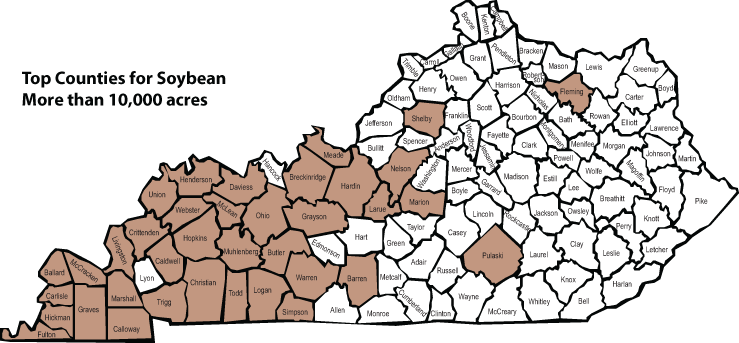Get Ready for National Ag Day - March 19, 2024
National Agriculture Day is March 19, but we encourage you to showcase your local farmers and food all March long, as it’s also National Nutrition Month! We've got some easy ideas below:
Learn About Agriculture in Kentucky
Have students watch one of the many videos we have about Kentucky Agriculture on our YouTube Channel. We recommend a Kentucky Farms Feed Me Virtual Field Trip or the Kentucky Agriculture: Our Farms, Our Food, Our Future video.
Kentucky's Top Commodities and Livestock by Sales in 2022:
Broilers (meat type chickens) - $1.1 billion
Horse sales and breeding services - $1 billion
Soybeans - $906 million
Cattle and calves - $739 million
Corn - $733 million
Tobacco - $337 million
Hay - $253 million
Specialty crops (hemp, produce) - $183 million
Dairy Products and Milk - $175 million
Chicken Eggs - $158 million
Hogs - $115 million
Wheat - $110 million
Learn about Agriculture in Your County
You may also research what food is grown in your county by visiting our Kentucky Food and Farm Files web site. Click on County Ag Data in the top menu. If you have elementary students, visit this county page. The links above use 2017 Census of Agriculture data, and new county profiles will not be available until later this month. You can, however, view the spreadsheets if you want to review the latest information.
Worksheet - Ag Where I Live
Worksheets, Lessons and Coloring Pages
PK-1 Worksheet - Things I May See on a Kentucky Farm
Explore Where We Grow the Various Crops and Livestock
Lesson for Grades 4+ -
My Kentucky Home Provides What I Need
Students will learn how topographic, geologic, and natural resource availability affect agriculture production in the Commonwealth. You may focus on Part 2 of the curriculum, which has students create and compare agricultural commodity maps using National Ag Statistics Service data.
Example of a map students will create. They will also become familiar with county names and Kentucky geography.
Standards connections and discussion questions to help reinforce those standards
Kentucky Academic Standards:
Social Studies - Economics K.E.MA.1, 1.E.KE.1, 2.E.KE.1, 2.E.ST.1, 3.E.KE.1, 4.E.MI.1, 4.E.KE.1, 5.E.KE.1
Financial Literacy - Financial Decisions
Discussion Questions:
K/1st - Why do we need farmers?
K/1st - What would happen if we did not have farmers in our community?
2nd - What are the reasons a farmer may choose to produce food?
3rd - What are examples of resources that farmers use to produce food? Which are limited, renewable, and non-renewable?
4th - Explain the roles of producers, consumers, products, and labor that make the agriculture system in Kentucky work.
4th - What factors influenced what early Kentuckians produced on farms? See "Kentucky Agriculture" video.
5th - How has Kentucky agriculture changed and what has influenced that change? See "Kentucky Agriculture" video at the link.
Financial Literacy - Discuss why we may want to purchase food directly from farmers in our community – it supports local businesses and ensures those goods will be there in the future. Buying locally also allows consumers to have a relationship with their farmers to know how they produce the food and take care of the environment. Fresh foods produced locally may also be fresher since they did not have a long way to travel from the farm to a grocery store. Convenience and cost are also factors. Is buying local food convenient? Cost more or less? These are community/regional issues.
Digging Deeper If you have more time:
Primary Interactive Google Slides - How Does My Community Provide What I Need? - Be sure to save it to your own drive to manipulate the slides.
Intermediate Google Presentation with student workbook printable - Feeding Kentucky - Science, Society, and Food in Kentucky
The Kentucky Farm as an Ecosystem and Economic Engine - Intermediate and Secondary Curriculum
Journey 2050 - A Virtual Sustainability Curriculum and Game for grades 6+. We recorded a webinar to help teachers learn how to use this program.
We’d love to see how you celebrate agriculture if you try any of these activities. Be sure to tag social media images with #teachkyag or use our new reporting form! We will hold a drawing for a new agriculture map; anyone who reports their activities by March 31 will be entered.






